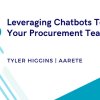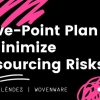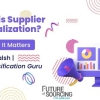One of the perennial buzzwords in the Automation Industry is scale. Researchers, providers, industry-watchers and the media in general are focussing on the nirvana of delivering Robotic Process Automation (RPA) at scale. This is most likely because there is less success in the industry than was expected…far less. (Deloitte reported recently that less than 5% of organisations have effectively ‘scaled’ their RPA.) As a result, many users are shifting their focus to other technologies with the mistaken belief that that this will unlock their true automation potential. Others are searching for scale but finding the costs can exceed the benefits. The reason for this is simple, most organisations don’t have the scale for simple automation approaches to work and the few that do, don’t know how to harvest it.
It’s easy to understand the quest for RPA-led scale when there are reports almost daily of companies achieving it. The truth is a little different. One of the poster child RPA clients has been running a global automation programme for over five years and the roughly 1000 full-time equivalent (FTE) reduction is seen as a huge success; that is, until you compare that to the number of total employees and realize that it equates to less than 1 percent of the population addressable through automation. In other words, they have largely concentrated on the low hanging fruit.
Also consider that the reports are generally about the same companies (about 5 percent) and the rest are struggling. This is leading to a focus on the cost of automation rather than the benefits and it’s a downward spiral. Lowering costs usually involves offshoring implementation and, worse still, discovery and support. The end result is typically low-value tactical automations that don’t add up to much and are poorly supported (i.e., they are fragile).
The good news is that you don’t need to abandon your RPA initiatives and you can deliver truly sustainable, transformational benefits but you will need to go about it in a different way:
- Cost. Instead of focussing on the cost of automation projects, focus on the benefits. If cost is the limiting factor, then it’s almost certainly the case that you have identified (‘discovered’) the wrong processes. Even taking a purely tactical approach, to break even in less than one year you only need to find and automate one-to-three FTEs of work. Whether this is worthwhile at all is questionable but a significant number of projects at this level might prove the technology works, provide experience and confidence and give momentum for more complex initiatives. Focussing on benefits means costs become almost irrelevant and return on investment (ROI) is the main consideration.
- Technologies. If RPA isn’t changing the landscape, then it’s highly unlikely that applying an alternative technology will lead to greater benefits. What IS likely is you need to augment your RPA tool with emerging technologies such as machine learning, simple Artificial Intelligence (AI), Natural Language Processing (NLP) and others. RPA is still the core industry automation tool and will continue to be for a few more years. The leading RPA tool providers have started to build in some of this functionality and this will continue.
- Combined Knowledge. Automation should always be considered as a tool in a broader initiative, whether as part of process excellence…or as an enabler for digital enterprise…or as a strategic weapon to attack business problems (such as optimising supply chain or regulatory compliance)…or even meeting business objectives (improving customer experience is a prime example). This will require a combination of internal process, strategic corporate goals and highly experienced automation specialists, all of which are vital to success. These are known as ‘joint agility teams.’
- Sponsorship. Successful automations require C-level sponsorship. Even if the programmes become self-funding there is still internal resistance to overcome and cloud cover will be required. Resistance comes in many forms:
o Resistance to change – freeing up resources even if they are to be redeployed will lead to operational resistance unless change management is carefully orchestrated.
o Fear of failure – the failure levels are high. No one wants to be associated with failure. Developing a cast iron business case and high-level approval will overcome this barrier.
o Initiative fatigue – Automation is now being viewed in some circles as another false technology dawn. There will be pockets within all organisations who are reluctant to dedicate resources to the latest fad. In our experience, one way to overcome this is early success and visibility which creates champions and heroes.
- Budget. A successful automation programme should start with a series of short projects and then initiate increasingly complex projects that are transformational and more rewarding. The short projects may appear trivial in the overall corporate context and the complex projects may be seen as higher risk and requiring investment. For momentum, it is essential that each project has a compelling business case and that the benefits are tracked and widely known, especially at the C-level .
The implementation of RPA can often seem like a daunting and expensive task. Through the alternative measures listed above your organization can move forward in successfully implementing this innovative technology.









